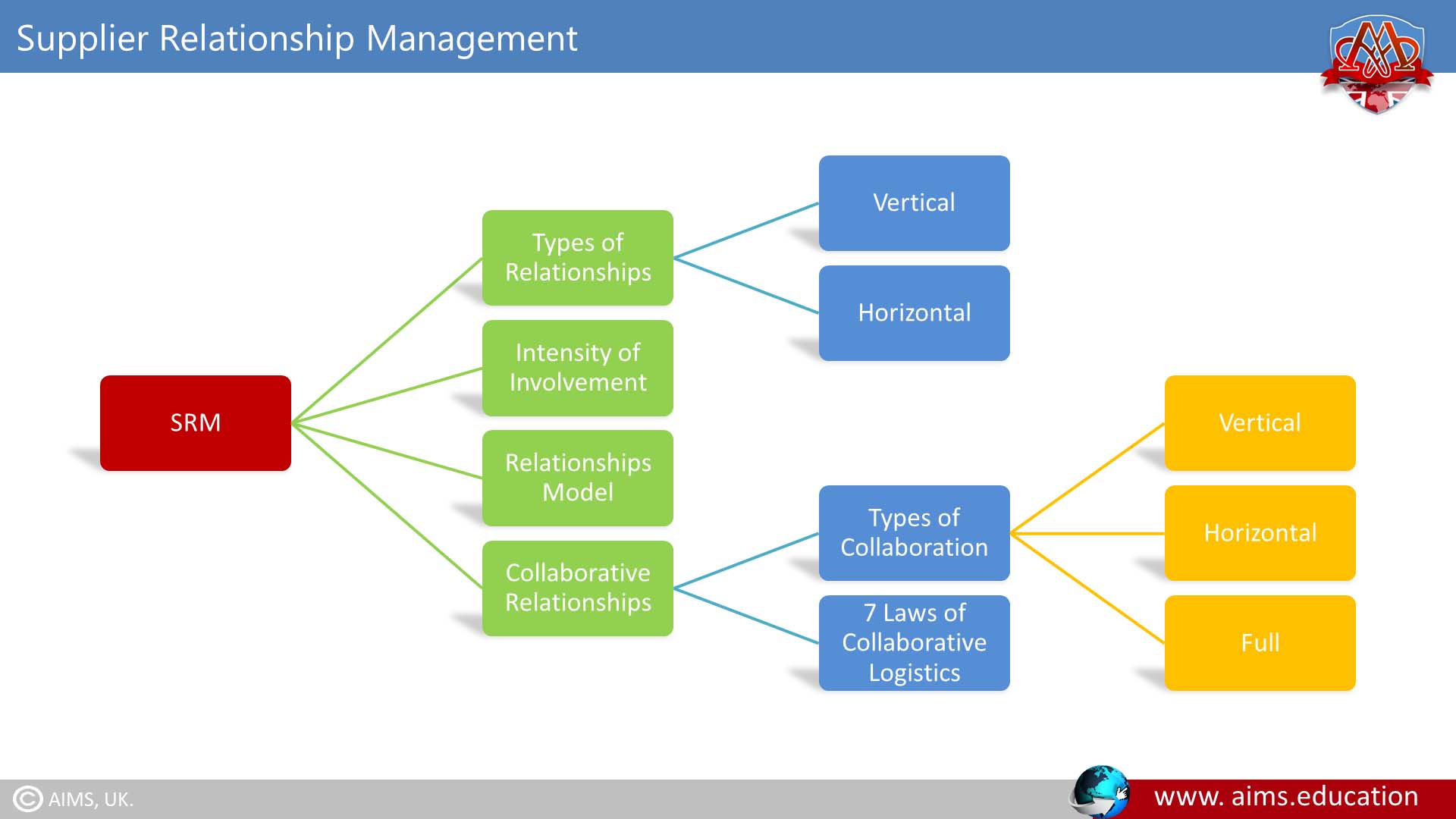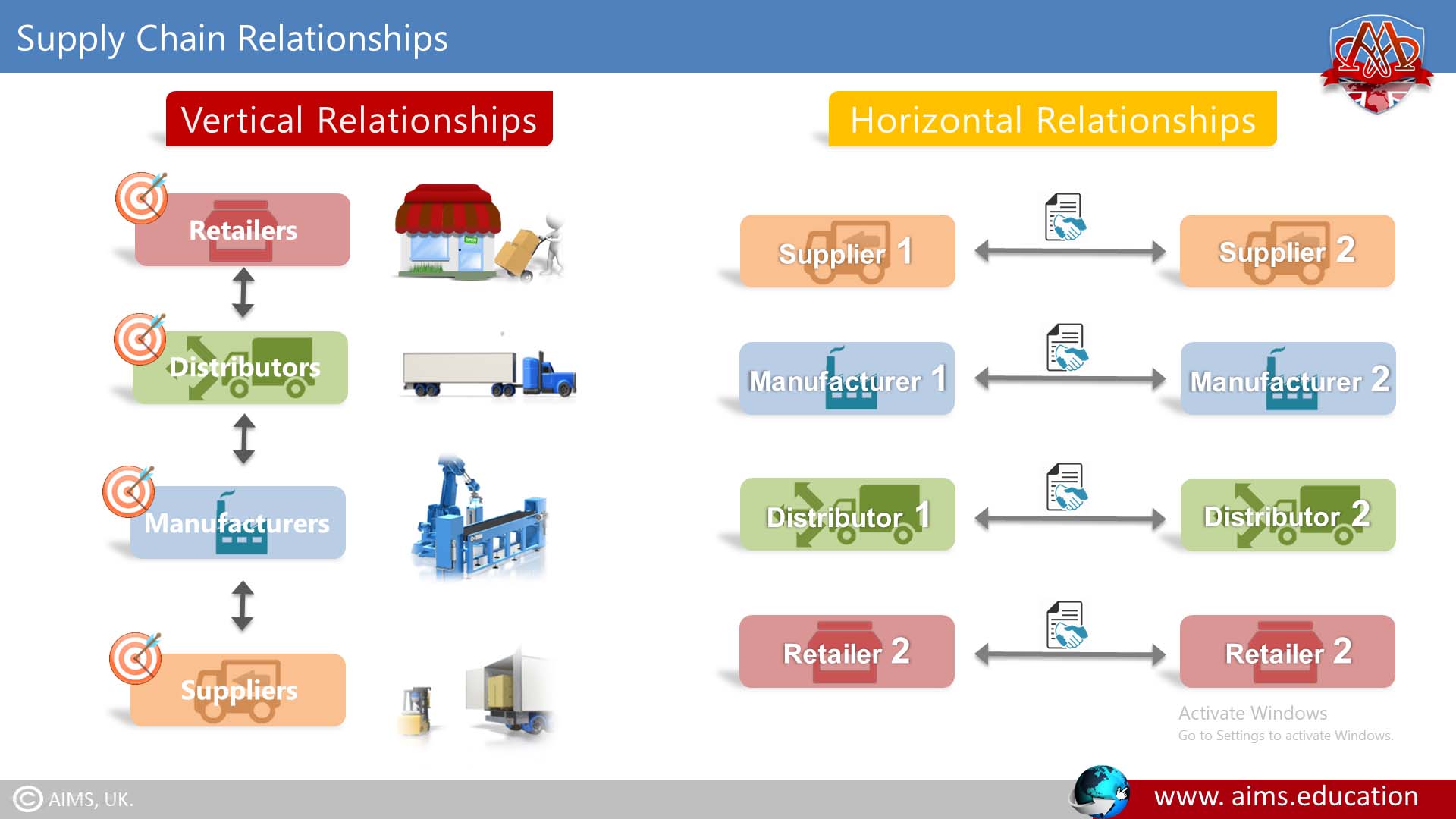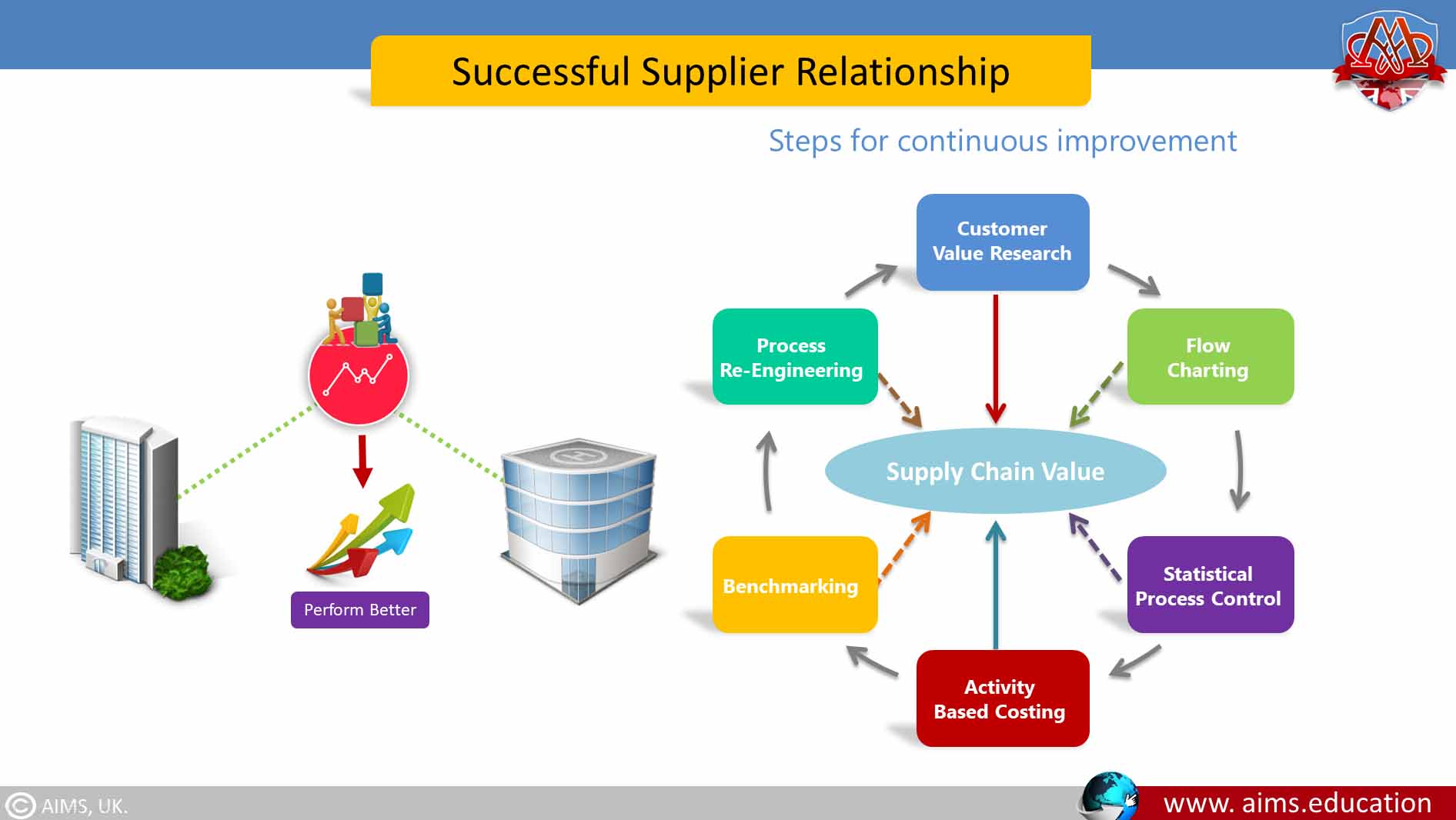What is SRM or Supplier Relationship Management?
Supplier Relationship Management system is about building strong partnerships and fostering mutually beneficial relationships with suppliers. It involves a systematic process of identifying, selecting, and managing suppliers to optimize their performance and drive value for both parties. An integral part of successful SRM is the effective use of supplier relationship management tools. These tools offer a structured and efficient way to manage supplier information, streamline procurement processes, and enhance communication, leading to improved supplier performance and stronger supply chain collaborations.

Types of Supplier Relationships
Supply chain relationships are often categorized as either vertical or horizontal. Both types of relationships have their place in SRM, depending on the specific context and the strategic goals of the organization. Businesses need to understand the nuances of both these relationships to leverage the right type for their unique supplier interactions.
1. Vertical Relationships
They encompass the traditional buyer-supplier relationships, characterized by a top-to-bottom hierarchy. In these relationships, the buyer holds a position of authority, dictating terms to the supplier. This form of relationship is typical in situations where the buyer has significant leverage over the supplier. However, while vertical relationships might ensure compliance, they may not necessarily foster innovation or long-term commitment.
2. Horizontal Relationships
They are based on mutual collaboration and equality. Rather than a hierarchy, these relationships reflect a partnership where both parties work together to achieve common goals. In horizontal relationships, buyers and suppliers engage in joint problem-solving sessions, share risk and rewards, and focus on mutual growth and innovation. These relationships are characterized by trust, transparency, and shared value creation, leading to long-term commitment and sustained competitive advantages.
Types of Supply Chain Collaboration
Different types of supply chain collaborations exist, each serving a unique purpose and offering distinct benefits. These collaborations can be broadly categorized as Transactional Relationships, Strategic Relationships, and Collaborative Relationships.
1. Transactional Relationship:
This is the most basic level of collaboration where interactions are purely transaction-based. Organizations typically engage in one-off purchasing transactions with suppliers, without any long-term commitments or relationship-building efforts. These relationships are often price-oriented, with the supplier selected based on the competitiveness of their quote. While transactional relationships may lack the depth and strategic value of other forms of collaboration, they provide flexibility, allowing businesses to switch suppliers easily in response to changing market conditions or pricing structures.
2. Strategic Relationship:
Strategic relationships are a step up from transactional relationships, involving long-term commitments between businesses and their key suppliers. The focus here is on mutual growth and success, with both parties working together to achieve shared objectives. Partners in a strategic relationship often look beyond price, considering factors such as quality, reliability, and supply chain innovation potential. Strategic relationships require trust, transparency, and regular communication, underpinned by formal contracts that outline roles, responsibilities, and expectations.
3. Collaborative Relationship:
At the pinnacle of supply chain collaboration are collaborative relationships. In these relationships, businesses and suppliers work together as partners, sharing resources, capabilities, and risks to create mutual value. Collaborative relationships often involve integrated systems and processes, joint planning, shared metrics, and a high degree of trust and transparency. These relationships go beyond day-to-day transactions or strategic alignment, fostering innovation, enhancing responsiveness to market changes, and enabling both parties to achieve outcomes that would be unattainable individually.

How to Build a Successful Supplier Relationship Management System?
By following these steps, businesses can build effective supplier management strategies that drive value and efficiency within their supply chain.
STEP-1: Understand Your Needs and Define Your Goals:
It’s essential to know what you want from your suppliers before you can begin to manage them effectively. This includes identifying the critical components of your supply chain and mapping out your expectations for supplier performance.
STEP-2: Select the Appropriate Suppliers:
Not all suppliers are equal, and choosing the right ones is a critical step in supplier management. This involves conducting thorough supplier evaluations to determine their capacity, reliability, and compatibility with your business needs.
STEP-3: Establish Clear Communication Channels:
Open, honest, and frequent communication is key to successful supplier management. This could involve regular updates, meetings, or reviews to discuss performance, address issues, and explore opportunities for collaboration and innovation.
STEP-4: Implement Supplier Performance Evaluations:
Regularly assessing your suppliers’ performance against defined metrics can help identify areas for improvement and encourage suppliers to maintain high standards. This could involve using supplier scorecards or other SRM tools to track performance.
STEP-5: Foster Long-Term Relationships:
Building strong, mutually beneficial relationships with suppliers can lead to increased loyalty, improved performance, and greater opportunities for collaboration. This involves treating suppliers as valuable partners, providing feedback, and working together to achieve shared goals.

Supplier Relationship Management Tools
Supplier relationship management tools provide businesses with a strategic edge in managing their supplier relationships, fostering effective collaborations, and driving business value. They are a crucial component of a comprehensive Supplier Relationship Management strategy. There are various types of Supplier Relationship Management tools available in the market, each with its unique features and benefits. The popular ones include the following:
1. Supplier Information Management (SIM)
SIM tools are designed to manage large volumes of complex supplier data. These solutions enable businesses to collate, analyze, and manage all supplier information in one centralized database. With SIM, companies can quickly access up-to-date supplier information, assess supplier capabilities, and identify potential risks. This results in more informed decision-making and streamlined procurement processes.
2. Supplier Performance Management (SPM)
SPM tools offer a systematic approach to monitor, measure, and manage supplier performance. These solutions provide real-time insights into supplier operations, ensuring compliance with service-level agreements, and identifying areas for improvement. By leveraging SPM tools, businesses can enhance supplier accountability, drive performance improvements, and foster stronger supplier relationships.
3. Contract Lifecycle Management (CLM)
CLM tools manage the entire lifecycle of a contract, from initiation and negotiation to implementation and renewal. These tools automate the contract management process, ensuring compliance, reducing administrative burden, and minimizing risks associated with contractual disputes. CLM enhances transparency, fosters trust between parties, and promotes more productive supplier relationships.
4. Supplier Risk Management (SRM)
Supplier Risk Management tools help businesses identify, assess, and mitigate supplier-related risks. These tools offer predictive analytics and risk-scoring capabilities, allowing businesses to address potential disruptions in the supply chain proactively. SRM tools play a pivotal role in ensuring supply chain resilience, protecting the company’s reputation, and maintaining the continuity of business operations.
5. e-Sourcing
e-Sourcing tools are technology solutions that streamline the sourcing process. They facilitate online bidding, negotiation, and supplier selection, significantly reducing the time and cost associated with traditional sourcing methods. e-Sourcing tools enhance efficiency, encourage competitive bidding, and ensure the selection of the most suitable suppliers.

Supplier Relationship Management Examples:
In the complex landscape of global supply chain management, collaborative SRM provides a platform for engaging suppliers in strategic discussions, fostering innovation, and maximizing supply chain efficiency.
The following case studies demonstrate that collaborative Supplier Relationship Management can lead to:
- Improved supplier performance,
- Cost reductions, and,
- Opportunities for innovation.
Therefore, effective supplier relationship management is not just about managing suppliers, but also about working together to create mutual value.
SRM Example-1: Apple Inc
Apple has been able to maintain its position as a market leader through effective SRM. One of their critical strategies is a close, collaborative relationship with their suppliers, leading to innovative products and ensuring a steady supply of quality components. They engage their suppliers early in the product development process which results in better forecasting, risk management, and product quality.
SRM Example-2: Dell
On the other hand, Dell provides an example of a successful Supplier Relationship Management approach leading to cost efficiencies. Dell’s direct model involves working closely with suppliers, with frequent communication and joint problem-solving sessions. This collaborative approach has significantly reduced costs and lead times, improving Dell’s competitive position in the market.
Leveraging Education for Successful SRM
Furthering your education in supplier relationship management (SRM) and related fields can significantly enhance your understanding and ability to effectively manage supply chains. There are abundant programs offered by AIMS for those interested. For instance, an online MBA in logistics and supply chain management or a Ph.D. in logistics and supply chain management can provide an in-depth understanding of SRM and other related topics. AIMS’ Supply Chain Institute also offers comprehensive courses, including a supply chain management diploma and an online logistics certificate. Additionally, there are a variety of supply chain management courses online that can fit your schedule, allowing you to expand your knowledge at your convenience.
Last Words
In sum, Supplier Relationship Management (SRM) is a pivotal component in the operational and strategic management process of any organization. The conscious effort to establish a mutually beneficial relationship with suppliers significantly enhances supplier performance and helps in effective risk management. The use of Supplier Relationship Management software can streamline supplier data, transforming the source-to-pay process, and improving supplier information management. This, in turn, creates a more robust supplier-based approach that can be fine-tuned through supplier segmentation. By integrating strategic supplier strategies into the SRM process, companies can unlock avenues for innovation and cost reduction.
